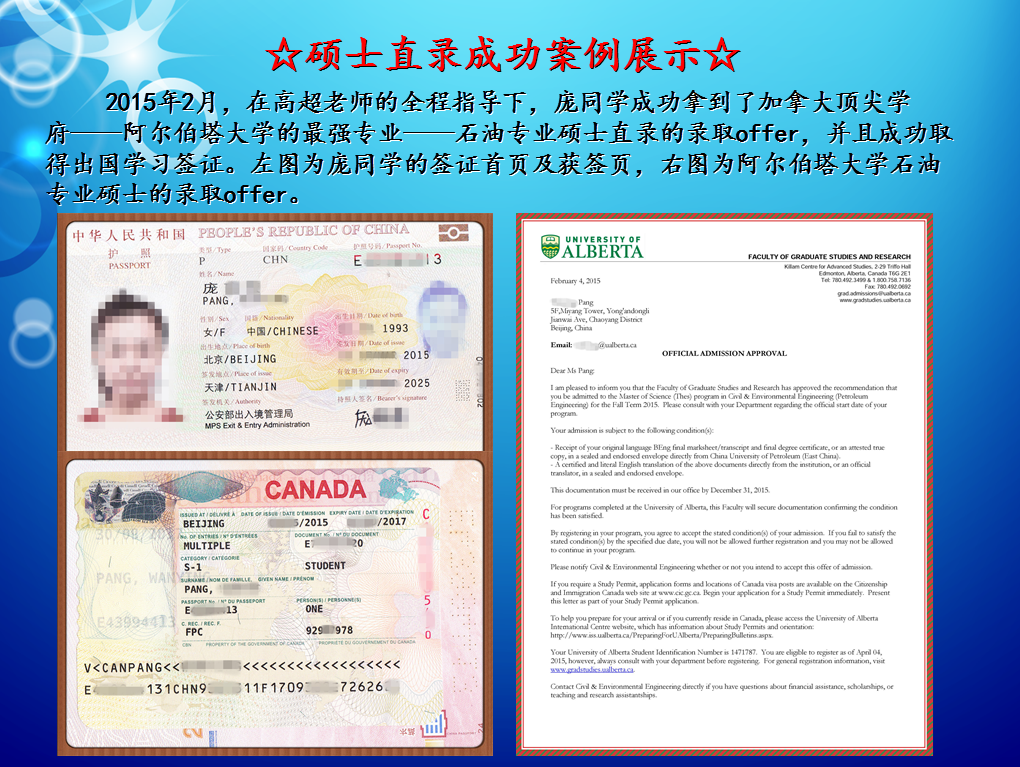2017年8月13日雅思阅读真题回忆.
2017-08-06 293阅读
本文澳际小编为大家整理了关于2015年8月13日雅思阅读机经的详细内容,希望对大家备考雅思阅读有所帮助,更多雅思机经请关注澳际教育雅思频道。
P1 Nasca 纳斯卡图案
P2 Bird Migration 鸟类的迁徙 V20120510
P3 人类的嗅觉
难度解析:
1. 本次考试难度中等。
2. 整体分析: 一篇为旧题,两篇新题。涉及文化类(P1)、动物类(P2)、生物类(P3).
3. 主流题型:判断和填空比重很大,各出现在两篇文章;matching和heading分别出现在不同文章当中;单选和多选均少量考查。
P1 :Nasca 南美文化中的神秘地形图案
考查题型:判断、填空
P2 :Bird Migration 鸟类的迁徙
参考原文:
Reading passage 2 has seven paragraphs, A-G.
Choose the correct heading for each paragraph from the list of headings �below.
Write the correct number, i-x, in boxes 14-20 on your answer sheet.
List of headings
i The best moment to migrate
ii The unexplained rejection of closer feeding ground
iii The influence of weather on the migration route
iv Physical characteristics that allow birds to migrate
v The main reason why birds migrate
vi The best wintering grounds for birds
vii Research findings on how birds migrate
viii Successful migration despite trouble of wind
ix Contrast between long-distance migration and short-distance �migration
x Mysterious migration despite lack of teaching
14 Paragraph A
15 Paragraph B
16 Paragraph C
17 Paragraph D
18 Paragraph E
19 Paragraph F
20 Paragraph G
Bird Migration
A
Birds have many unique design features that enable them to perform such �amazing feats of endurance. They are equipped with lightweight, hollow bones, �intricately designed feathers providing both lift and thrust for rapid flight, �navigation systems superior to any that man has developed, and an ingenious heat �conserving design that, among other things, concentrates all blood circulation �beneath layers of warm, waterproof plumage, leaving them fit to face life in the �harshest of climates. Their respiratory systems have to perform ficiently �during sustained flights at altitude, so they have a system of extracting oxygen �from their lungs that far exceeds that of any other animal. During the later �stages of the summer breeding season, when food is plentiful, their bodies are �able to accumulate considerable layers of fat, in order to provide sufficient �energy for their long migratory flights.
B
The fundamental reason that birds migrate is to find adequate food during �the winter months when it is in short supply. This particularly applies to birds �that breed in the temperate and Arctic regions of the Northern Hemisphere, where �food is abundant during the short growing season. Many species can tolerate cold �temperatures if food is plentiful, but when food is not available they must �migrate. However, intriguing questions remain.
C
One puzzling fact is that many birds journey much further than would be �necessary just to find food and good weather. Nobody knows, for instance, why �British swallows, which could presumably survive equally well if they spent the �winter in equatorial Africa, instead fly several thousands of miles further to �their prerred winter home in South Africa’s Cape Province. Another mystery �involves the huge migrations performed by arctic terns and mudflat-feeding �shorebirds that breed close to Polar Regions. In general, the further north a �migrant species breeds, the further south it spends the winter. For arctic terns �this necessitates an annual round trip of 25,000 miles. Yet, en route to their �final destination in far-flung southern latitudes, all these individuals overfly �other areas of seemingly suitable habitat spanning two hemispheres. While we may �not fully understand birds’ reasons for going to particular places, we can �marvel at their feats.
D
One of the greatest mysteries is how young birds know how to find the �traditional wintering areas without parental guidance. Very few adults migrate �with juveniles in tow, and youngsters may even have little or no inkling of �their parents’ appearance. A familiar example is that of the cuckoo, which lays �its eggs in another species’ nest and never encounters its young again. It is �mind boggling to consider that, once raised by its host species, the young �cuckoo makes it own way to ancestral wintering grounds in the tropics bore �returning single-handedly to northern Europe the next season to seek out a mate �among its own kind. The obvious implication is that it inherits from its parents �an inbuilt route map and direction-finding capability, as well as a mental image �of what another cuckoo looks like. Yet nobody has the slightest idea as to how �this is possible.
E
Mounting evidence has confirmed that birds use the positions of the sun and �stars to obtain compass directions. They seem also to be able to detect the �earth’s magnetic field, probably due to having minute crystals of magnetite in �the region of their brains. However, true navigation also requires an awareness �of position and time, especially when lost. Experiments have shown that after �being taken thousands of miles over an unfamiliar landmass, birds are still �capable of returning rapidly to nest sites. Such phenomenal powers are the �product of computing a number of sophisticated cues, including an inborn map of �the night sky and the pull of the earth’s magnetic field. How the birds use �their ‘instruments’ remains unknown, but one thing is clear: they see the world �with a superior sensory perception to ours. Most small birds migrate at night �and take their direction from the position of the setting sun. However, as well �as seeing the sun go down, they also seem to see the plane of polarized light �caused by it, which calibrates their compass. Traveling at night provides other �benits. Daytime predators are avoided and the danger of dehydration due to �flying for long periods in warm, sunlit skies is reduced. Furthermore, at night �the air is generally cool and less turbulent and so conducive to sustained, �stable flight.
F
Nevertheless, all journeys involve considerable risk, and part of the skill �in arriving safely is setting off at the right time. This means accurate weather �forecasting, and utilizing favorable winds. Birds are adept at both, and, in �laboratory tests, some have been shown to detect the minute difference in �barometric pressure between the floor and ceiling of a room. Often birds react �to weather changes bore there is any visible sign of them. Lapwings, which �feed on grassland, flee west from the Netherlands to the British Isles, France �and Spain at the onset of a cold snap. When the ground surface freezes the birds �could starve. Yet they return to Holland ahead of a thaw, their arrival linked �to a pressure change presaging an improvement in the weather.
G
In one instance a Welsh Manx shearwater carried to America and released was �back in its burrow on Skokholm Island, off the Pembrokeshire coast, one day �bore a letter announcing its release! Conversely, each autumn a small number �of North American birds are blown across the Atlantic by fast-moving westerly �tail winds. Not only do they arrive safely in Europe, but, based on ringing �evidence, some make it back to North America the following spring, after �probably spending the winter with European migrants in sunny African climes.
Questions 21-22
Choose TWO letters, A-E.
Write the correct letters in boxes 21 and 22 on your answer sheet.
Which TWO of the following statements are true of bird migration?
A Birds often fly further than they need to.
B Birds traveling in family groups are safe.
C Birds flying at night need less water.
D Birds have much sharper eye-sight than humans.
E Only shorebirds are resistant to strong winds.
Question 23-26
Complete the sentences below using NO MORE THAN ONE WORD OR NUMBER from the �passage.
Write your answers in boxes 23-26 on your answer sheet.
23 It is a great mystery that young birds like cuckoos can find their �wintering grounds without ______.
24 Evidence shows birds can tell directions like a ______ by observing the �sun and the stars.
25 One advantage for birds flying at night is that they can avoid contact �with ______.
26 Laboratory tests show that birds can detect weather without �______signs.
参考答案:
List of headings:
Features
Main reason
Unexplained rejection
Success without teaching
How to find the way
Find good moments
Succeed even with wind
Multiple Choices: 选两个关于鸟类迁徙的正确说法,选的是AC
A.travel more distance than they need 说鸟老师飞的比它实际need的地方远
C. need less water at night 说鸟半夜飞不怎么需要喝水,有提到at night 可以防止 predators and �dehydration(脱水)
Summary
Foster-parents/parental. predators, lost,鸟利用invisible clue 去飞
6. P3
人类的味觉
考察题型:matching+判断+选择
(仅供参考)
以上是关于2015年8月13日雅思阅读机经的详细内容,希望对大家备考雅思考试有所帮助,更多雅思机经尽在澳际教育雅思频道。
留学咨询
更多出国留学最新动态,敬请关注澳际教育手机端网站,并可拨打咨询热线:400-601-0022
留学热搜
相关推荐
- 专家推荐
- 成功案例
- 博文推荐

Copyright 2000 - 2020 北京澳际教育咨询有限公司
www.aoji.cn All Rights Reserved | 京ICP证050284号
总部地址:北京市东城区 灯市口大街33号 国中商业大厦2-3层









高国强 向我咨询
行业年龄 12年
成功案例 3204人
留学关乎到一个家庭的期望以及一个学生的未来,作为一名留学规划导师,我一直坚信最基本且最重要的品质是认真负责的态度。基于对学生和家长认真负责的原则,结合丰富的申请经验,更有效地帮助学生清晰未来发展方向,顺利进入理想院校。
Amy GUO 向我咨询
行业年龄 17年
成功案例 4539人
一切的一切从现在开始.用自己的态度闯出一片天
薛占秋 向我咨询
行业年龄 11年
成功案例 1869人
从业3年来成功协助数百同学拿到英、美、加、澳等各国学习签证,递签成功率90%以上,大大超过同业平均水平。
Tara 向我咨询
行业年龄 7年
成功案例 1869人